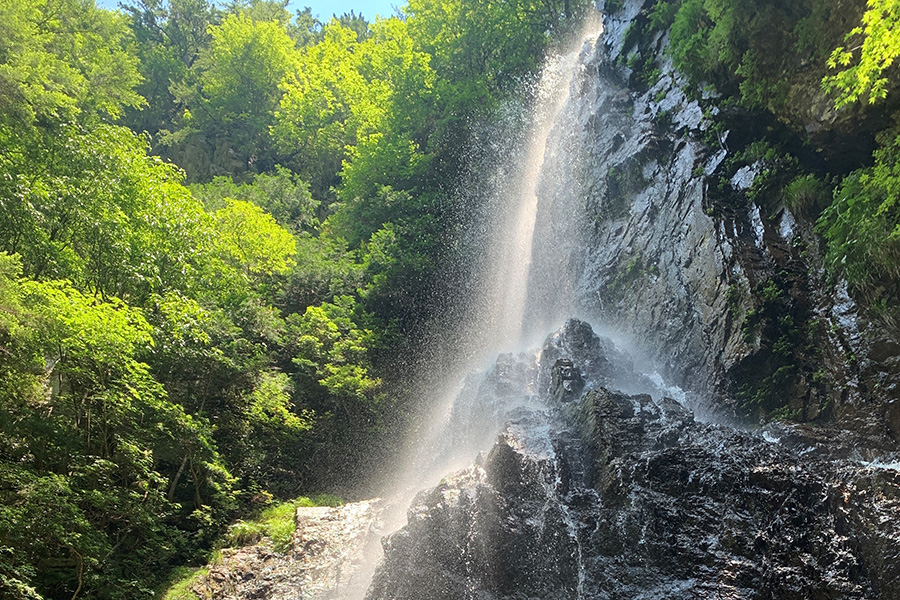Mifune Falls

Mifune Falls is known locally as a seasonal spectacle. In summer, when the ground is clear of snow, the base of the falls can be reached by a short walk over mountain streams and between mossy trees. High up on the ridge, water cascades down a 50-meter cliff, fanning out into a wide, shimmering spray. Beneath the falls is a churning pool that drains down the ridge and out of sight.
In winter, when temperatures and wind conditions are right, the entire waterfall freezes into an intricate pillar of ice. The road to the trail closes in winter due to deep snow, but well-equipped hikers can cover the roughly 3-kilometer distance in about an hour. Mifune most often freezes between the latter half of January and early February.
Mifune Falls is in an area known as Ihika, a name that is recorded in the 712 Kojiki (Records of Ancient Matters), Japan’s oldest surviving chronicle. The text describes how Jinmu, the country’s legendary first emperor, journeyed from the southwest in search of a place to establish his capital. In his wanderings, the emperor encountered a glowing well with a mysterious deity named “Ihika,” who helped guide him.
